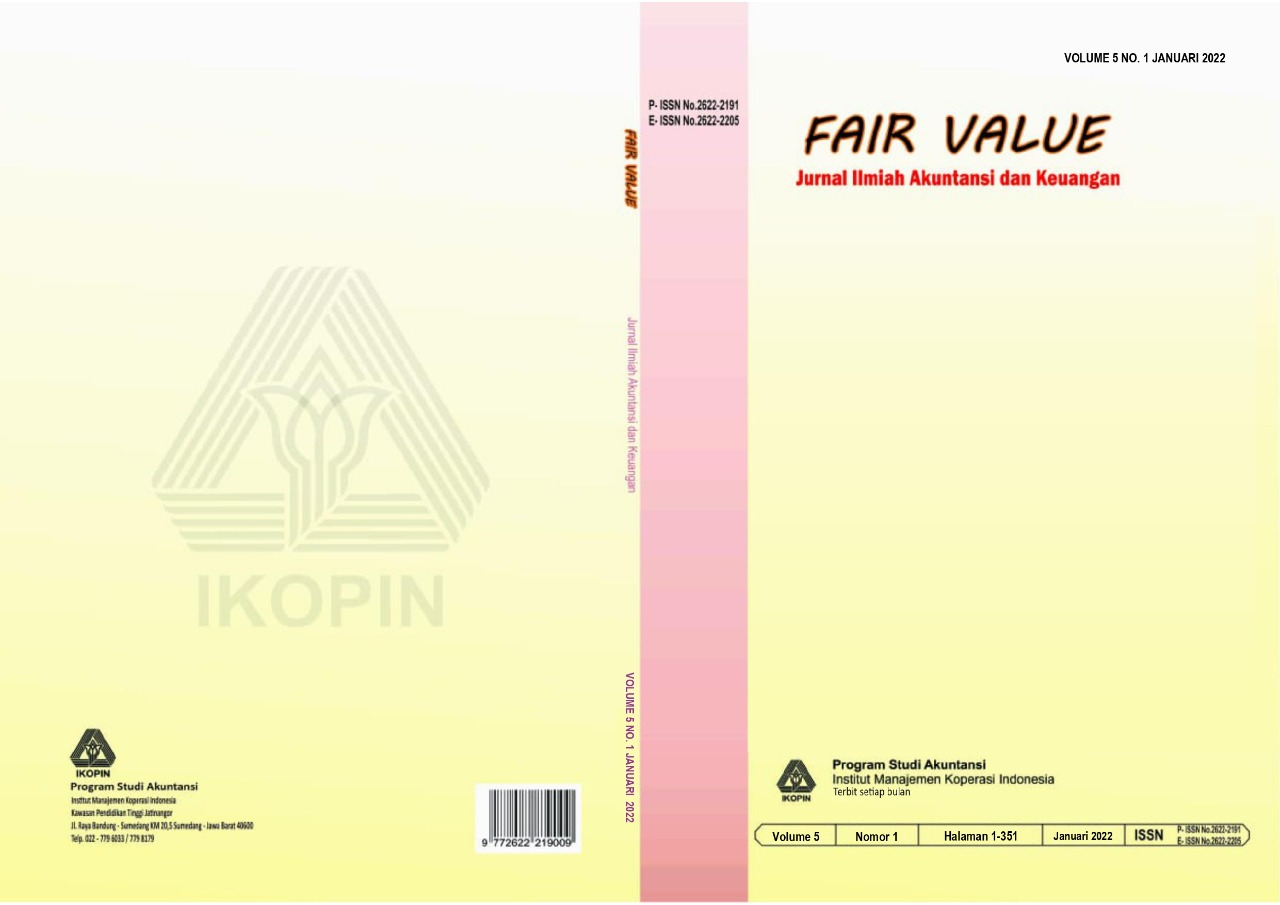Religious organization hospital business sustainability in the covid-19 pandemic
Main Article Content
Abstract
The purpose of this research is to analize Covid-19 outbreak have impact with healthcare sector’s financial performance. Parameter that used are liquidity ratio, profitability ratio and solvability ratio. Result will show from the difference of financial performance before and after pandemic. Two type of data that being used are secondary and analysis data. Secondary data is in the form of financial statement from private hospital owned by religious organization. Analysis data that being used are comparison between financial statement in 2019 and 2020 from related hospital as an illustration of condition before and after Covid-19 pandemic. Research variable that used in this paper are liquidity ratio proxied by current ratio, profitability ratio proxied by profit margin and solvability ratio proxied by debt to-equity ratio. The result indicate there is no significant difference towards liquidity ratio, solvability ratio, and profitability before and after Covid-19 pandemic outbreak. Prediction of financial performance for the next 5 years in terms of liquidity will show some increase as show in solvability’s term. As opposed, in terms of profitability will show some decrease. The research outcome expected to be suggestion for management to conduct efficiency and evaluation related to debt management.
Article Details
References
Agyekum, K., Kukah, A. S., & Amudjie, J. (2021). The impact of COVID-19 on the construction
industry in Ghana: the case of some selected firms. Journal of Engineering, Design and
Technology, 20(1), 222–244.
Badan Penyelenggara Jaminan Sosial. (2020). Program SCF Bantu Jaga Likuiditas 1.043 Rumah Sakit.
BPJS.
Brigham, E. F., & Houston, J. F. (2021). Fundamentals of financial management: Concise. Cengage
Learning.
Bustami, Y., Sarmigi, E., & Mikola, A. (2021). Analisis perbandingan profitabilitas bank umum syariah
sebelum dan selama pandemi covid-19. Al Fiddoh Islamic Bank Journal, 2(1), 28–36.
Consulting, D. E. & F. (2020). Dcode economic & financial consulting. Dcodefc. https://dcodeefc.com
Daryanto, W. M., Iffah, M., & Mahardhika, R. (2021). Financial performance analysis of construcfion
company before and during covid-19 pandemic in Indonesia. International Journal of Business,
Economics and Law, 24(4), 99–108.
Devi, S., Warasniasih, N. M. S., Masdiantini, P. R., & Musmini, L. S. (2020). The impact of covid-19
pandemic on the financial performance of firms on the Indonesia stock exchange. Journal of
Economics, Business, & Accountancy Ventura, 23(2), 226–242.
Esomar, M. (2021). Analisa dampak covid-19 terhadap kinerja keuangan perusahaan pembiayaan di
Indonesia. Jurnal Bisnis, Manajemen, Dan Ekonomi, 2(2), 22–29.
Fairlie, R. (2020). The impact of COVID‐19 on small business owners: Evidence from the first three
months after widespread social‐distancing restrictions. Journal of Economics & Management
Strategy, 29(4), 727–740.
Kementrian Kesehatan. (2021). Pasien COVID-19 Melonjak, Kementerian Kesehatan Minta Setiap RS
Tambah Persediaan Tempat Tidur. Kementrian Kesehatan.
KPCPEN. (2021). Covid-19 distribution map. Committee for Handling Covid-19 and National
Economic Recovery. https://covid19.go.id/
Kurniawati, L. (2021). Assessing company performance before and after joint ventures during the
covid-19 period. Seminar Nasional ADPI Mengabdi Untuk Negeri, 2(1), 71–74.
Mukisi. (2021). Mukisi. Mukisi.Com.
Nuraini. (2020). The first covid-19 case, people don’t panic. Indonesia.Go.Id.
Prasetya, V. (2021). Analisis kinerja keuangan perusahaan sebelum dan saat pandemi covid 19 pada
perusahaan farmasi yang tercatat di bursa efek Indonesia. Cerdika: Jurnal Ilmiah Indonesia, 1(5),
–587.
Sofyan, M. (2021). Kinerja BPR dan BPRS pada masa pandemik covid-19. Seminar Nasional ADPI
Mengabdi Untuk Negeri, 2(1), 6–12.
World Health Organization. (2021). WHO Coronavirus Disease (COVID-19) Dashboard With
Vaccination Data. WHO.
Xu, M., Fralick, D., Zheng, J. Z., Wang, B., Tu, X. M., & Feng, C. (2017). The differences and
similarities between two-sample t-test and paired t-test. Shanghai Archives of Psychiatry, 29(3),

